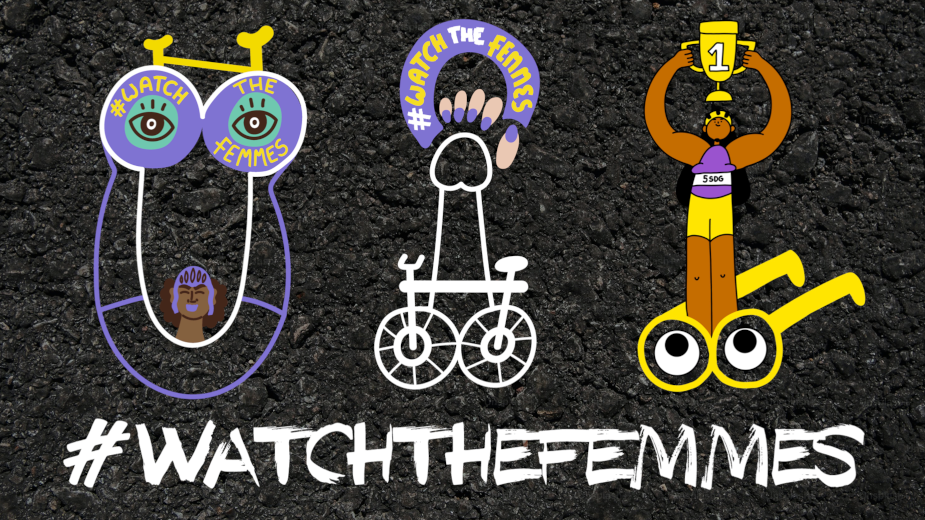
How Škoda’s “Penis Responders” Repurposed Graffiti to Create Fans of Women’s Cycling

Repurposing graffiti penises to promote a sporting event. That’s a media innovation we’ve never seen before.
Škoda, a long-term sponsor of the legendary Tour de France, and FCB London recently turned an infamous quirk of the men’s race — the annual appearance of penis graffiti on the route — into a creative campaign to promote the Tour de France Femmes avec Zwift, which is what the women’s competition is called.
Deploying a dedicated Škoda support car, driving ahead of the cyclists, a pair of feminist artists worked alongside race organisers to transform the crude drawings into empowering, cycling-themed artworks, each tagged with the campaign hashtag #WatchTheFemmes. By hijacking the global spotlight on the men’s event, the project aimed to raise awareness and viewership for the women’s race, which follows immediately after.
The Problem and the Opportunity
Every year, penis graffiti appears on the men’s Tour de France route. Because people are alike in some ways the world over. It’s actually such a big problem that there is a team, informally called the ‘Eraser Men’, who go ahead of the cyclists to censor the daubed genitalia. But FCB London, tasked with creating a campaign for the official car sponsors of both races, saw that as a challenge Škoda could flip into a creative opportunity to drive awareness of the women’s race.
“The brief is, effectively, how do you drive eyeballs to the women's race,” says executive creative director Kyle Harman-Turner. The brand has sponsored it for four years and while viewership is growing, there are still “huge gaps” between the two. The men's race is 21 days versus nine for the women's — the amount of coverage is lower, even the circuit they race doesn’t go through famous landmarks in the same way. “The whole thing was really about how do you hijack the men's race and the huge spectacle of it — only second to the men's Football World Cup in viewership, with [some sources claiming it’s watched by] 3.5 billion people — to get eyeballs on the women's race.”
Cheeky but Purposeful
While the idea is playful, it’s not just a willy gag. The team wanted to balance silliness with meaningful advocacy for women’s cycling. “It was one of those ideas where, as soon as we all saw the framing, we thought, fuck, that's famous,” says Kyle. “It was then just about making sure we could do it in a way that kept that cheek and charm, but elevated it beyond that. To leverage it, to make it a more social thing, to get people talking about it, but land it in a place that's serious too. That’s what’s cool about the idea.”
The Rapid-Response Concept
The “penis responders,” as Kyle called the illustrators – Cecile Dormeau and Erin Aniker – and team around them, drove in the 221st support car (a Škoda of course) as a nimble, mission-driven addition to the race, working in tandem with the clean-up crew. “The role of the car is important, because they have 220 cars there already. So this idea of a car that can actually help out the Eraser Men — to nimbly move through the mountains and track with them to get there — makes sense.” The Eraser Men do what they can. But they can’t deal with the sheer quantity of painted pricks on the 3,500 km course. “Being able to get there quickly helps, because the cars are fundamental to the urgency needed — so that helps in the sell.”
To get to that point of implementation, FCB London collaborated with mural experts Global Street Art, brainstorming quick, weather-proof transformations of penises, filling a wall with ideas to turn them into symbols of feminism and cycling.

Kyle remembers the strange situation his job ended up landing him in: “We did a lot of pre-emptive designs. We had a whole day dedicated to different design aspects — long ones, girthy ones, as is true of life. We ended up with this wall full of dick designs.
Some themes came up — “lots of balls turning into bike wheels, naturally,” says Kyle, as well as strangely elongated characters, swapping one kind of helmet for another, which “had a nice synergy,” he notes.

Then there were technical decisions. The expertise of Global Street Art helped to decide what would be quick enough to do. Making line drawings was important rather than block colours — if it rains, block colours will run much more than single lines. The Eraser Men brought their expertise to figure out the right paint consistency so it didn’t make tyres slip on the track – a crucial consideration.
“There’s a Willy on a Hilly”
The artists and Eraser Men worked side by side, swapping rollers and sharing laughs in camaraderie.
“This was never about taking anything away from the Eraser Men,” says Kyle. “What they do is fabulous. We were just there as a squad together. All the girls got on really well with the guys. They were even sharing rollers at one point, taking different parts of the course to get it done on time.”
This job was almost as speedy as the cyclists in the race, but the team rolling their sleeves up together created memorable moments. “Erin, for example, is an incredible, bubbly character — so enthusiastic, so excited about the whole thing, so open to us,” says the ECD. “At one point I was filming her in the back of the car and she went, ‘There’s a willy on the hilly — let’s go!’ We’ve just got fabulous moments with her that I can’t wait to see in the final film we’re making — a doc of the whole thing.”
With four helicopters filming the cyclists, the aim was to get as many converted characters caught on camera as possible. “The energy on the shoot was amazing,” says Kyle. “All the artists were like, ‘Is that…?’ Someone was watching the live event coverage on their phone, filming their friends, saying, “Can you see it? Is it on the camera?” Then suddenly someone shouted from the side of the hill, “There!” and we all ran over, looking at the iPhone showing their work on the broadcast. It was kind of beautiful.”















